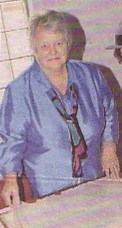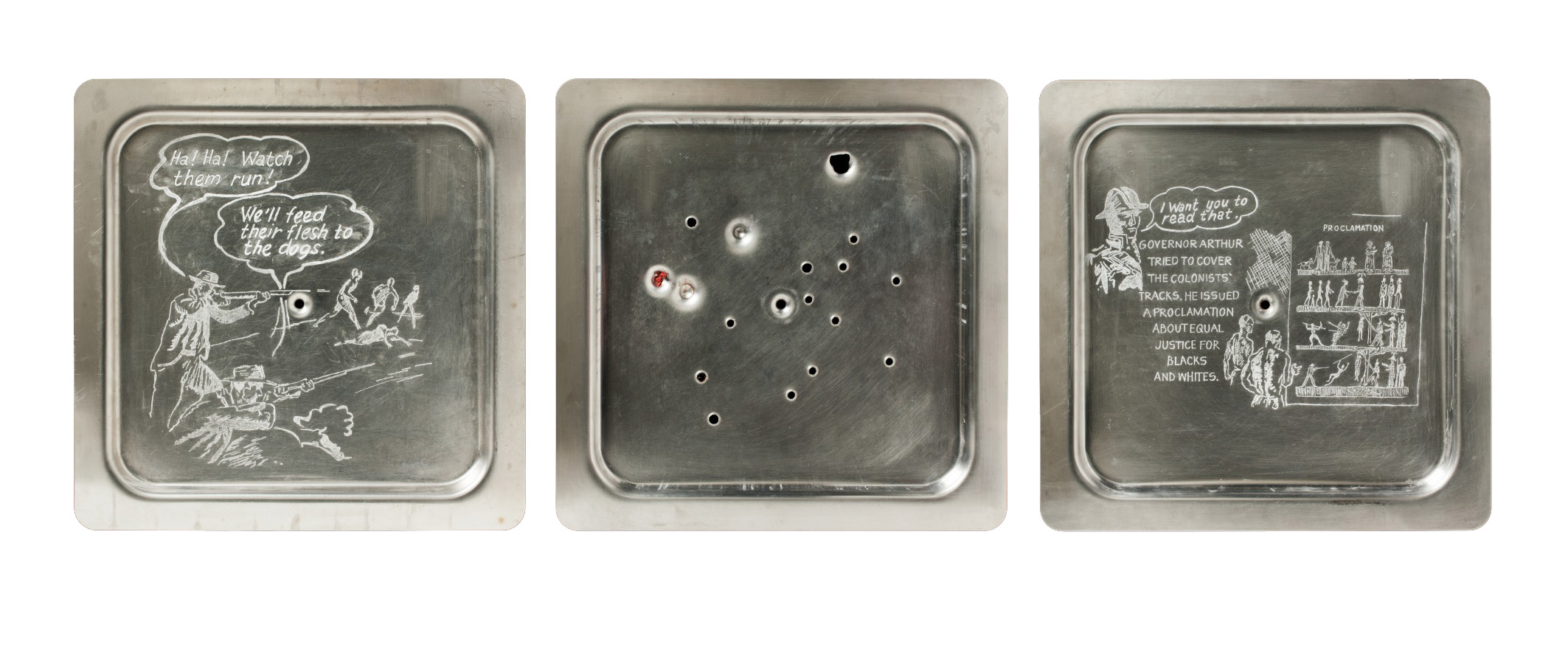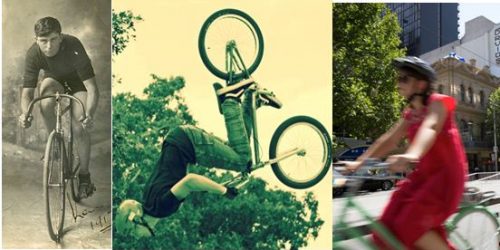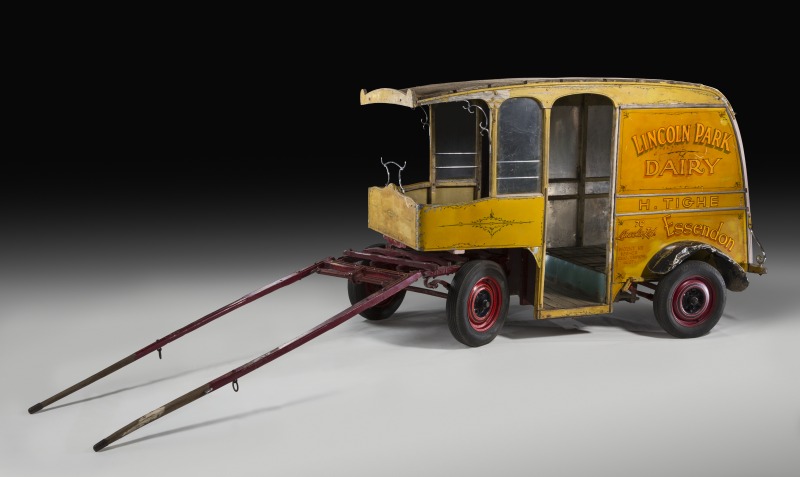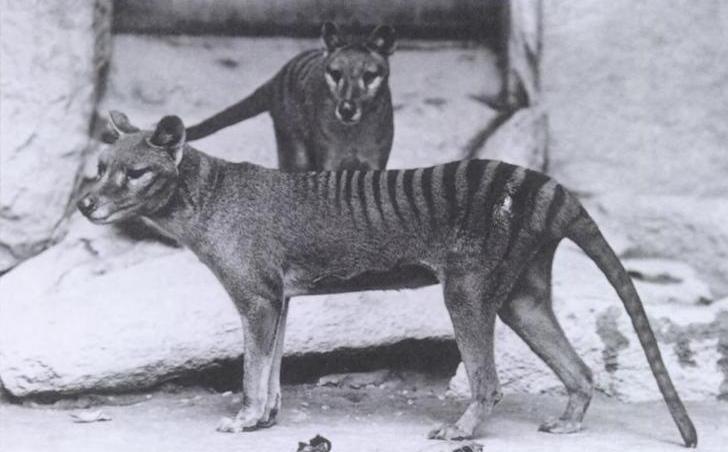Riverina Rabbits: volunteers digging the dirt
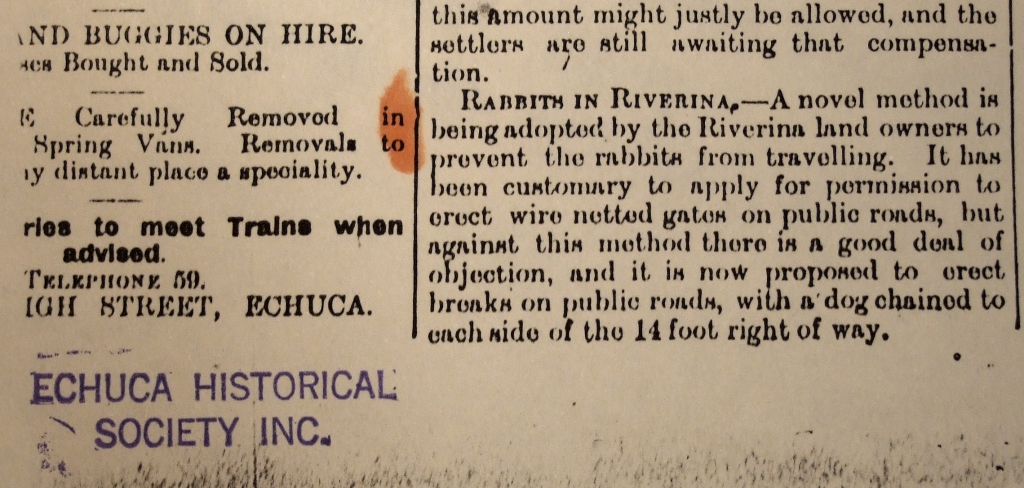
Today, December 5, is International Volunteer Day. At the National Museum of Australia, curators collaborate with a wide range of people, including many volunteers, to research and develop collections and exhibitions. In People and the Environment team, we recently came across a wonderful example of the contribution volunteers made to a previous project at the National Museum, and we thought that effort deserved sharing.
The 1992 project ‘The Grey Invasion – Rabbits, Land and People’ generated an exhibition and wealth of research documentation, including stories sent in by Australians telling of their experiences with rabbits. When the files from this project were reviewed as part of preparatory work for the Museum’s current ‘Rabbits in Australia’ web feature, it was striking how much material had been compiled by volunteers. The files were filled with page after page of carefully photocopied articles from old newspapers, each sheet with key sections highlighted and publication dates written in by hand. With the launch of the online search facility Trove, much curatorial research can now be done while sitting at a desk, far away from the sight and scent of hundred year-old paper covered with dense, inky newsprint. Who had gone to all this trouble? Dotted throughout the files amongst the photocopies, brief hand-written and typed cover notes revealed the contributors…
In September 1992 Mr Frank Sutton of Echuca Historical Society in northern Victoria responded to a request by the National Museum for people to share rabbit stories. Frank proposed to search the Society’s extensive archive of Riverine Herald newspapers dating from the nineteenth century, make photocopies of relevant rabbit articles, and send them to the Museum. It was a generous offer to undertake a long and laborious research task – the kind of task that Museum staff rarely had time to do in such detail. The proposal was gratefully accepted, and marked the beginning of a valuable research collaboration between Frank, Echuca Historical Society and National Museum curator Denis Shephard. Frank commenced work perusing each page of tiny newsprint, copying, highlighting and dating articles. Batches of his findings arrived at the Museum in regular intervals.
Frank’s research made a lasting contribution – to the Museum’s ‘Grey Invasion’ and ‘Rabbits in Australia’ projects, but also to the Echuca Historical Society, which benefited from the development of a detailed index of articles in the Society’s Riverine Herald archive. The photographs below show Frank Sutton inside the Society’s museum in 1996 and Ms Heather Rendle, another committed Echuca Historical Society volunteer (photographs courtesy Echuca Historical Society).
Correspondence between Denis and Frank continued regularly for nearly four years until Frank died in July 1996. Society member Ms Heather Rendle then continued on with the work in Frank’s stead until the conclusion of the museum’s ‘Grey Invasion’ project.
In recent correspondence with the National Museum, Heather wrote:
‘Frank was a founding and Life Member of the Echuca Historical Society, long-serving Secretary/Treasurer. He was our Archivist, Researcher, Mentor, in an era before Trove. He managed to index in detail 30 years of the local paper the Riverine Herald from the hard copies. The Riverine people even gave him a research desk at their office. We still miss him after 18 years and his legacy is an exact part of our files.’
Earlier this year, Heather was made a Life Member of Echuca Historical Society in recognition of her service to that association. While Denis Shephard retired from the National Museum several years ago, he himself has now returned, as a much valued volunteer!
The photographs below show the Echuca Historical Society’s museum building (left) and the Society’s archive room (photographs courtesy Echuca Historical Society).

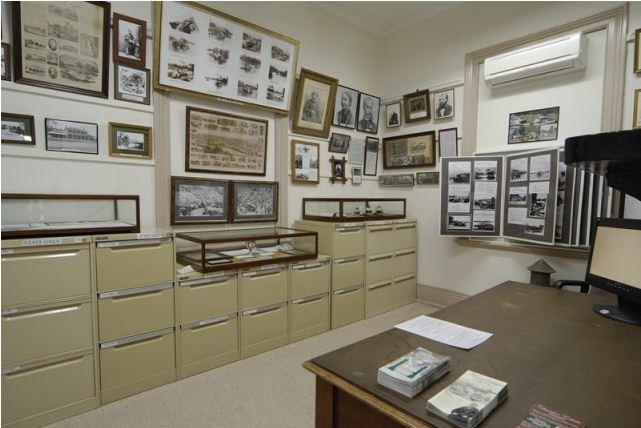 Community and cultural organisations at local, state and national levels all benefit from the efforts of dedicated and enthusiastic volunteers; without volunteers, many would not exist. So to Frank, Heather, Denis and tireless volunteers everywhere – a very big thank you.
Community and cultural organisations at local, state and national levels all benefit from the efforts of dedicated and enthusiastic volunteers; without volunteers, many would not exist. So to Frank, Heather, Denis and tireless volunteers everywhere – a very big thank you.
Rabbits in the Riverina
Following release of a small number for hunting on a Victorian property in 1859, European wild rabbits (Oryctolagus cuniculus) spread rapidly across Australia. In the succeeding decades rabbits reached plague proportions in southern Australia and came to be considered noxious and destructive pests. Various legislation was enacted which established responsibilities for local management boards and landowners to control and eradicate rabbits. Neglect and non-compliance were penalised by hefty fines, however despite determined fencing, trapping, poisoning and shooting – which accounted for vast numbers of rabbits – more remained.
The great need to solve the rabbit problem inspired various methods and inventions all of which aimed to provide the most efficient and successful way of ridding the pest from the landscape. Newspapers such as the Riverine Herald informed readers of new concepts in rabbit-destruction, reported unexpected and unusual occurrences, shared tasty rabbit recipes, discussed rabbit prices, re-printed notable rabbit stories from other districts, covered legal proceedings against those found shirking their rabbit responsibilities, and ran advertisements for the latest technologies in rabbit-removal.
Articles forwarded by Frank, and latterly Heather, provide a fascinating insight into unusual events and the creative, gruesome and humorous ideas adopted by Australians in the – still ongoing – war against the furry grey invaders. To read a selection of the fascinating Riverine Herald rabbit stories unearthed by Frank and Heather, click on the Trove links below.
1. ‘The Rabbit Pest’ Riverine Herald, 6 April 1880, p. 3 (scroll down)
2. ‘Sturdy Rabbits’ Riverine Herald, 3 April 1897, p. 3 (scroll down)
3. ‘A Depraved Taste’ Riverine Herald, 15 March 1897, p. 2
4. ‘A Novel Method of Rabbit Destruction’, Riverine Herald, 12 February 1908, p. 2 (scroll down)
5. ‘Cooked rabbit while you wait’ Riverine Herald, 3 December 1918, p. 2 (scroll down)
6. ‘Rabbits cross river’ Riverine Herald, 8 January 1919, p. 2
7. ‘Gas attacks on rabbits’ Riverine Herald, 5 January 1920, p. 3
8. ‘Rabbit paste’ Riverine Herald, 21 August 1943, p. 3
9. ‘Rabbit en casserole’, Riverine Herald, 11 September 1943, p. 3
10. ‘Smokogas’ Riverine Herald, 17 May 1944, p. 4
More links
Read more about rabbits, and volunteer your own stories to the National Museum’s project-in-progress, ‘Rabbits in Australia’
Volunteers at the National Museum of Australia
International Volunteer Day 2014
Top image: Echuca Historical Society volunteer Mr Frank Sutton searched newspapers the old-fashioned way – by hand – to find the story told in this clipping. Published in the Riverine Herald on 16 September 1907, the article tells of a ‘novel method… being adopted by the Riverina land owners to prevent the rabbits from travelling.’ Transcription: ‘RABBITS IN RIVERINA. – A novel method is being adopted by the Riverina land owners to prevent the rabbits from travelling. It has been customary to apply for permission to erect wire netted gates on public roads, but against this method there is a good deal of objection, and it is now proposed to erect breaks on public roads, with a dog chained to each side of the 14 foot [4.26 metre] right of way.’

